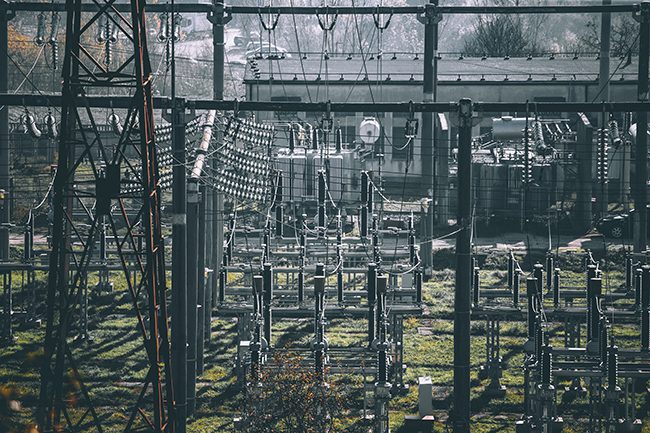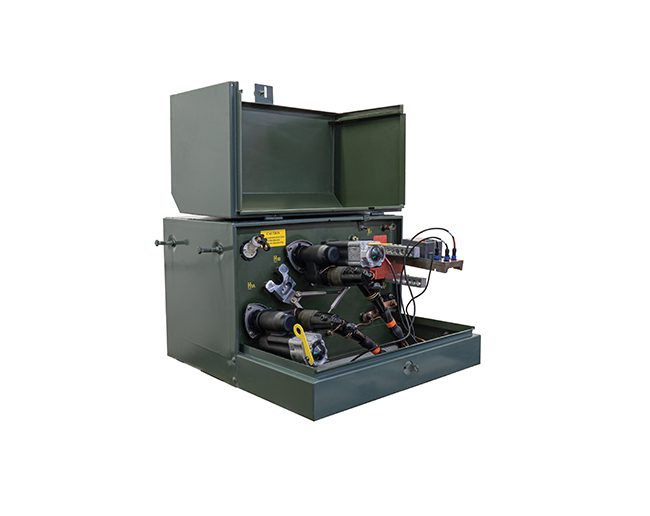The Journey to a Smart Grid: Funding and New Technology Make It Possible
With the U.S. government funneling billions of dollars into new grid infrastructure, and private companies rolling out new systems to mitigate outages and developing artificial intelligence that can predict with greater accuracy than ever before, the prospects for a truly smart grid have never been better.
The Department of Energy’s (DOE’s) Office of Electricity (OE) calls the U.S. power grid “an engineering marvel.” According to the OE, the system has more than 9,200 electric generating units with more than a million MW of generating capacity connected to more than 600,000 miles of transmission lines. It’s a remarkable ecosystem of asset owners, manufacturers, service providers, and government officials at federal, state, and local levels, all working together to run a highly reliable power distribution network (Figure 1).
 |
|
1. The U.S. power grid is an engineering marvel with millions of miles of transmission and distribution lines all connected in an incredible network. Source: Envato Elements |
The term smart grid has been around for more than a decade. POWER rolled out its Smart Grid award in 2011, when the words were more of a buzz phrase. At the time, the magazine honored Vermont Electric Cooperative (VEC) for improving service to its members by developing an innovative “grid modernization strategy.” Among the items it completed were installing a smart metering system and advanced metering infrastructure technology. It also equipped field crews and operations teams with a GPS-enabled outage management and mapping system, eliminating reliance on paper maps, which were commonly used at the time. VEC also implemented a supervisory control and data acquisition system for substation automation, and connected all substations to its control center with fiber backhaul. These were all state-of-the-art upgrades at the time. Today, they are commonplace.
Funding Smart Grid Technology
Smart grid technologies have been made possible by two-way communication technologies, control systems, and computer processing. These advanced technologies include advanced sensors known as Phasor Measurement Units (PMUs) that allow operators to assess grid stability, advanced digital meters that give consumers better information and automatically report outages, relays that sense and recover from faults in substations automatically, automated feeder switches that re-route power around problems, and batteries that store excess energy and make it available to the grid later to meet customer demand.
The DOE supports the development of smart grid technologies in many ways. For example, on Nov. 18, 2022, it announced $13 billion in new financing opportunities for the expansion and modernization of the nation’s electric grid. Funded by the Bipartisan Infrastructure Law, the Grid Resilience Innovative Partnership (GRIP) program and the Transmission Facilitation Program together represent the largest single direct federal investment in critical transmission and distribution infrastructure ever.
GRIP Program. The GRIP program money will be divided across three programs. Projects are expected to be delivered in the following areas:
- Grid Resilience Utility and Industry Grants. $2.5 billion will be used to fund comprehensive transmission and distribution technology solutions that are expected to mitigate multiple hazards across a region or within a community, including wildfires, floods, hurricanes, extreme heat, extreme cold, storms, and any other event that can cause a disruption to the power system. Eligible applicants include electric grid operators, storage operators, generators, transmission owners or operators, distribution providers, and fuel suppliers.
- Smart Grid Grants. $3 billion will be used to increase the flexibility, efficiency, reliability, and resilience of the electric power system, with particular focus on increasing capacity of the transmission system, preventing faults that may lead to wildfires or other system disturbances, integrating renewable energy at the transmission and distribution levels, and facilitating the integration of increasing numbers of electric vehicles, buildings using electricity for heat and hot water, and other grid-edge devices. The program is open to domestic entities including institutions of higher education, for-profit entities, non-profit entities, state and local government entities, and tribal nations.
- Grid Innovation Program. $5 billion will be used to provide financial assistance to one or multiple states, tribes, local governments, and public utility commissions to collaborate with electric grid owners and operators to deploy projects that use innovative approaches to transmission, storage, and distribution infrastructure to enhance grid resilience and reliability.
Transmission Facilitation Program. The Transmission Facilitation Program establishes an innovative revolving fund to help overcome the financial hurdles facing large-scale new transmission lines, upgrades of existing transmission lines, and, in select states and territories, the establishment of microgrids. The Bipartisan Infrastructure Law authorizes the DOE, through the program, to borrow up to $2.5 billion to assist in the construction of high-capacity transmission lines with an innovative approach that can spur valuable new lines that otherwise would not get built or increase the capacity of already planned lines.
New Technology Available
Meanwhile, as those programs get rolling, other smart grid technology is available today. For example, Chicago, Illinois–headquartered S&C Electric Co., a leader in grid modernization, will launch its new EdgeRestore System at the DISTRIBUTECH International conference in San Diego, California, Feb. 7–9, 2023. The company provided POWER with an exclusive early look at the EdgeRestore System (Figure 2), which is designed to dramatically improve power reliability for customers by mitigating outages and eliminating emergency truck rolls on underground residential distribution systems.
 |
|
2. S&C Electric’s new EdgeRestore system is easy to deploy with smart communication and fits inside the transformer enclosures on new or existing underground residential loop circuits with no changes to protection schemes. Courtesy: S&C Electric |
When an underground fault or single loss of source occurs on an underground residential loop, the EdgeRestore system automatically locates and isolates the fault and reroutes power from an alternate source—all within 60 seconds. This intelligent system reduces the impact of sustained outages that commonly last for hours and eliminates the need for immediate crew intervention, keeping power on until the underlying issue can be resolved. The automatic isolation of faults also greatly simplifies the process for locating faults on underground residential circuits and reduces medium-voltage exposure for crews. Furthermore, the devices do not need any programming, firmware updates, computers, internet connectivity, batteries, radios, or antennas.
“EdgeRestore truly modernizes the last mile of the underground power distribution system, reducing sustained power outages to momentary interruptions and making the grid safer, smarter, and more resilient throughout weather challenges and growing electricity demands,” Anders Sjoelin, S&C president and CEO, said in a statement issued to POWER. “S&C’s long history of grid innovation and customer focus help us deliver solutions that address the challenges utilities face today and anticipate the challenges they will face tomorrow.”
Florida Power and Light Co. (FPL) is expected to be an early adopter of the technology. “For nearly two decades, Florida Power and Light has been on a journey to build a stronger, smarter and more storm-resilient energy grid to better serve our customers,” Manny Miranda, executive vice president of power delivery for FPL, said in the statement issued by S&C. “We’re pleased to work with S&C, with whom we’ve had a long relationship, to help develop modern solutions that advance the grid and have a positive impact for our customers by keeping the power on, now and in the decades to come.”
Artificial Intelligence for the Smart Grid
“Beyond Limits is an industrial AI [artificial intelligence] company specializing in developing hybrid AI solutions by combining data and expert knowledge,” Azarang Golmohammadi, machine learning manager with Beyond Limits, told POWER. “The company has developed solutions for the energy industry including power production optimization,” he added.
Mehdi Hosseini, a data scientist with Beyond Limits, explained that AI can help the performance of the smart grid in two major ways. “One of them is accurate prediction of demand and generation, and the other is the real-time grid operation,” he said.
“Power utility companies rely heavily on long-term and short-term predictions,” Hosseini explained. “For example, every day they require an accurate prediction of the electrical demand of the next day. The electrical demand is heavily associated with weather data, business activities, and everything that affect those business activities. So, they go through historical data to find patterns and point associations between those two to have an accurate prediction.
“One of the important applications of AI that is already being used by many power utilities—and is also a hot research topic—is to encode these predictions using different AI tools, whether they are in the form of neural networks or tree-based models. These models go through historical data and are trained on any feature that might affect the electrical demand of the next day,” Hosseini said.
Having accurate predictions helps companies plan power plant unit operation much better and minimize spinning reserves. “That reduces the operation cost and also reduces the carbon emissions caused by running unnecessary power generation units. So, that’s an important factor,” said Hosseini.
Having accurate weather predictions is also very important. Currently, most companies use numerical methods like numerical optimization to improve power plant operation. But as the number of renewable generation units increases, the numerical calculations become more complex with many more decision variables, often greatly affected by weather. If utilities want to solve those problems in real time, numerical optimization falls short, especially when there is high uncertainty in the power sources.
“The way that AI helps, as suggested by many recent studies, is to replace numerical optimization with methods like reinforcement learning. Reinforcement learning models can be trained on numerous operation scenarios, and once trained, they can make scalable decisions in very short time—they can reduce the runtime by at least three orders of magnitude. They can make decisions in a fraction of a second, as opposed to numerical methods that require minutes or even hours for a larger-scale problem,” Hosseini said.
One of the concerns surrounding AI, however, involves feasibility and safety of the solution. “With mathematical optimizations, you have hard-coded constraints in the system, but when you’re using AI, they only rely on training. So, it doesn’t guarantee that you never have an unsafe solution, especially when it comes to energy systems or operational power systems,” said Hosseini.
But work is being done to address the dilemma. “There are many methods that try to combine AI in different forms with numerical methods,” Hosseini said. There have also been strategies developed to use AI as a decision support tool rather than as a decision-maker. “As a recommender system to human operators,” Hosseini explained. There may also be ways to encode constraints into AI models, so a solution to overcome this challenge may be very near.
—Aaron Larson is POWER’s executive editor.